Garden begonia: description, types and secrets of successful cultivation
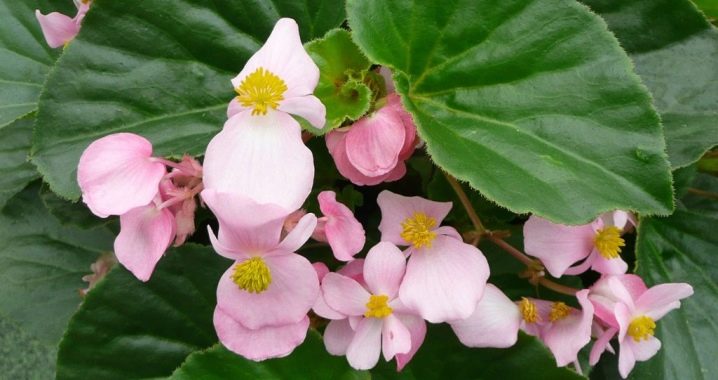
Begonias are considered the perfect decoration for flower beds and garden paths. They are planted in open ground or grown in containers, using them for effective gardening of plots and adjacent territories. Most often, you can find annual begonias in gardens. Their delicate flowers bloom at a time when all other plants are just beginning to wake up.
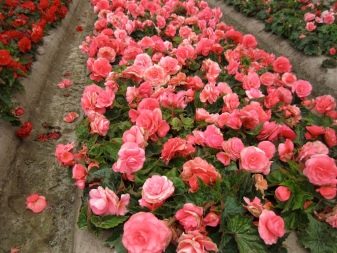

Peculiarities
Any florist in the summer can take his home begonia to the terrace, balcony or area near the house, where it will be an excellent decoration for the landscape. But if we talk specifically about garden varieties of begonias, then in most cases these are annuals, since in our climate they cannot be in the ground all year round. With the onset of the cold period, they are dug up and stored until the onset of spring heat.
Garden begonia is a fairly compact plant. The height of the bush does not exceed 30 cm, so the flower is often used in mixborders and as a decoration for garden paths. The flowering is quite abundant. Sometimes there are so many buds that you can't even see the foliage behind them.
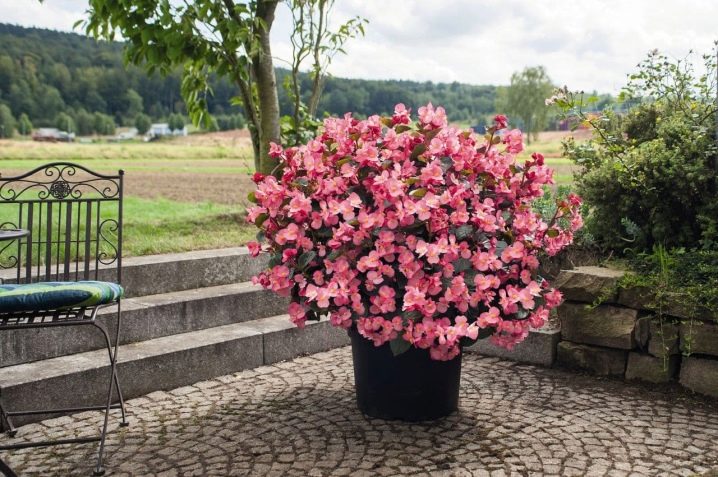
The size of the flowers in a loose state is 5-15 cm. The texture can be double or semi-double, the colors are varied. Visually, depending on the variety, they resemble flowers of azaleas, small peonies or roses. The leaf plates are bright green, the shape is usually asymmetric, the edges are finely toothed.
Garden begonia belongs to moisture-loving crops, prefers light partial shade, although in recent years breeders have presented many hybrid varieties. They grow well in both high temperature and low humidity conditions. These flowers are also not afraid of light frosts and lingering showers.
Some growers grow potted begonias, decorate balconies or porches with them., and when the weather conditions worsen, they are brought back into the living quarters. However, experts say that such changes create a stressful situation for the plant. It takes a long time to adapt to a changed environment, so in our climatic zone it is better to immediately plant begonias in a permanent place.
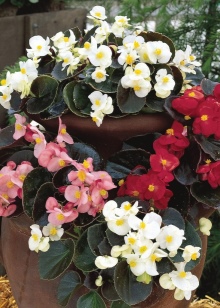
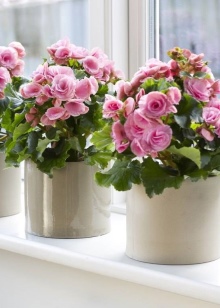
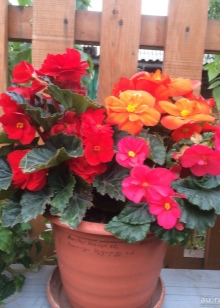
Varieties
Today there are quite a few types of garden begonias. In landscape design, several varieties are considered the most popular. Let's consider them in more detail.
Tuberous
These flowers are distinguished by a rather long and abundant flowering, which lasts from the very first days of summer until the last decade of November. The height of the bush is 25-35 cm, the plant is distinguished by fleshy tubers and strong stems. Inflorescences can be double or smooth, variable color (red, scarlet, white, pink, yellow). The size of one flower is 6-20 cm.


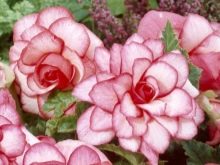
Ampere
These varieties are intended for growing in hanging pots and tall flowerpots. The shoots of the bush are quite long (up to 80 cm), the stems are falling. These types of begonias are great for decorating all kinds of vertical structures. They tolerate any temperature well and retain their decorative effect even with the onset of light frosts.

Eternally flowering
These are miniature plants 15-20 cm high. They are widely used for garden landscaping due to their unpretentiousness, abundant flowering and rich color (from milky white tones to bright purple and red shades). Leaves are oval, with a glossy surface.Their color ranges from deep green to brown.

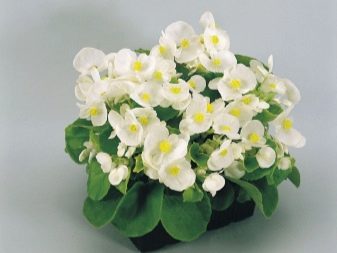
Landing
Before planting, it is important to properly prepare the tubers for moving to open areas. To begin with, they are cleaned of all rotten processes. If the bulb is large (from 5 cm), it can be divided into two parts. Sprinkle the cut site with crushed activated carbon. After that, the tubers are placed in a weak solution of potassium permanganate or any other fungicide for disinfection for 25-30 minutes.
All work with tubers must be done carefully. Do not drop the bulbs and put pressure on them, otherwise they may become unsuitable for germination.

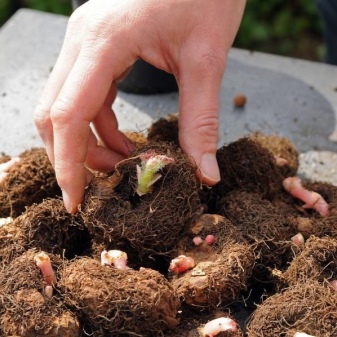
After preparation, you need to place the tubers in a box with a universal soil mixture. Keep in mind that the begonia tuber has convex and concave sides. When planting, the bulb should be buried with the convex side, while the concave side will be directed upwards. Care must be taken that a third of the tuber remains on the surface. As soon as the first shoots appear, it will be possible to completely cover the planting material with earth.
When flowers appear on the seedlings, this will mean that the plant is ready to be transplanted into open ground. For growing garden begonias, it is better to choose sunny weather, it is advisable to carry out all work in the morning. In order for the plant to delight you with its abundant flowering, you must adhere to the basic recommendations.
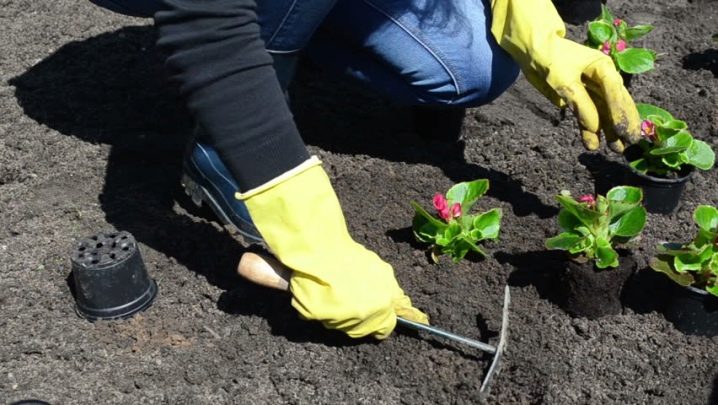
It is better to plant a garden begonia in a place with light shade, since under the scorching rays of the sun, the leaves of the culture turn yellow and dry out. The diffused light will be enough for a lush bush to form. At the same time, areas that the sun's rays do not reach at all are also not suitable - with a lack of ultraviolet radiation, the shoots begin to stretch out and become thinner. The plant loses its beauty.
For begonias, loose soil with a neutral acid-base reaction is considered optimal. It is best to prepare a place for begonias in the fall. To do this, the site is dug up, all the rhizomes of weeds are removed, peat, river sand, rotted compost or humus are introduced. In this case, the earth will be nutritious, but at the same time breathable. It is these conditions that are considered the best for garden begonia.
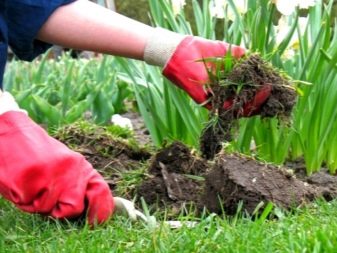
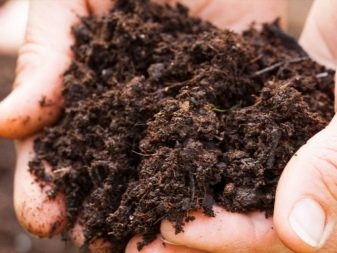
Waterlogging is extremely dangerous for begonias, therefore, when planting, it is imperative to form a drainage layer. As in the case of potted plants, small pebbles or expanded clay are suitable here.
After planting, the plant must be watered and mulched. This measure will allow retaining the required amount of moisture and suspend the drying out of the earth in hot summer heat.
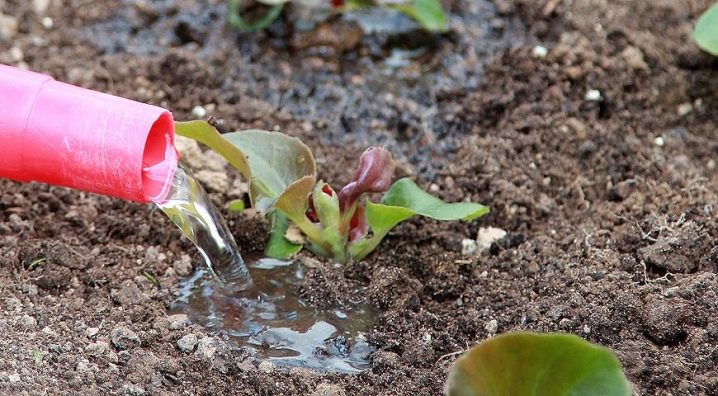
It is worth noting that begonias can be planted without problems in the same place for 5-7 years, since they almost do not deplete the soil.
Care
Begonia likes regular watering, but irrigation should be moderate. It is better to water the plant in the morning and evening hours so that the sun's rays do not fall on the drops of moisture remaining on the leaf plates and flowers (this can cause burns). It is advisable to alternate humidification with ordinary and slightly acidic mineral water, especially for the benefit of young, freshly planted plants. When using hard tap water, it is advisable to add 1 teaspoon of vinegar for every 10 liters.
Over-watering or exposure to direct sunlight may cause the plant to shed its buds. In this case, it is necessary to reduce the volume of the irrigation composition or change the habitat of the begonia, transferring it together with the earthen clod to another site with more suitable conditions.
In its natural environment, begonia is often attacked by pests such as aphids and spider mites. Aphids are greenish in color. Replacing a spider mite is more difficult - these are very small pests, but when they appear on the leaves and stems, whitish thinnest cobwebs become visible. Insects feed on the vital sap of the plant, which leads to wilting and rapid death of the flower.


If pests are found, it is necessary to treat the begonia with a solution of laundry soap. It is applied with a sponge to the leaves by hand so as to physically remove all parasites. After a few hours, the flower is rinsed with warm water. To prevent the appearance of pests, experienced florists recommend sprinkling begonia with infusion of onion peel or tobacco.
During the entire spring-summer period, fertilizers need to be applied from time to time. It is best to use ready-made complex preparations for flowering plants. Such feeding should be carried out every two weeks.

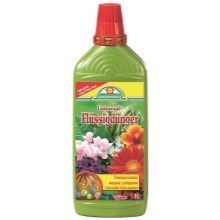

Preparation for wintering
Under natural conditions, begonia belongs to perennial evergreen crops that bloom continuously in winter. Unfortunately, in the conditions of central Russia, this is impossible, therefore begonia should be removed from the street for the winter in order to prepare it for further planting in the spring.
When the air temperature at night begins to drop below 15 degrees, garden begonia stops forming buds.
Inflorescences and leaves begin to dry out and fall off. At this point (usually in mid-September), it is necessary to carefully dig out the tubers from the ground, rinse them in warm water, and then dry them naturally. When the tubers are completely rid of the soil and dried, it is necessary to place them in a paper box or wooden box, cover them with river sand and send them to storage in a cellar or underground, where the air temperature is kept at 3-7 degrees.

Use in landscape design
Begonia is ideal for creating stylish and effective flower arrangements. It goes well with many shrubs that prefer partial shade, and also well complements low-growing perennials. Most often, these flowers are combined with border plants such as Iberis, Lobularia, Surfinia, Lobelia. The combination of begonias with garden lilies, cineraria or asters looks very beautiful.
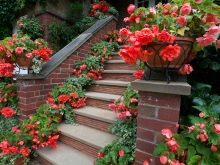
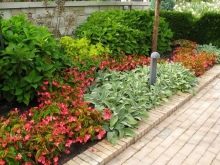

These flowers are often used to create rockeries, as well as alpine slides and garden beds with exclusive patterns, for landscaping terraces and outdoor areas. We can say that street begonias look harmoniously with all garden crops, which is why the plant is so loved by designers in Russia and far beyond its borders.
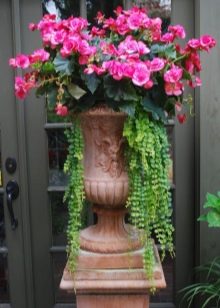
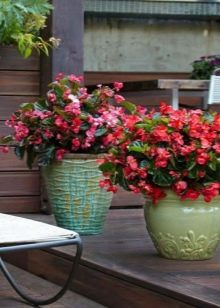
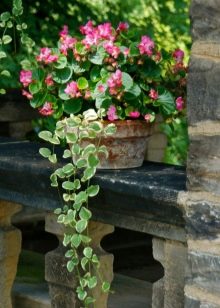
For information on how to store begonia tubers in winter, see the following video.































The comment was sent successfully.